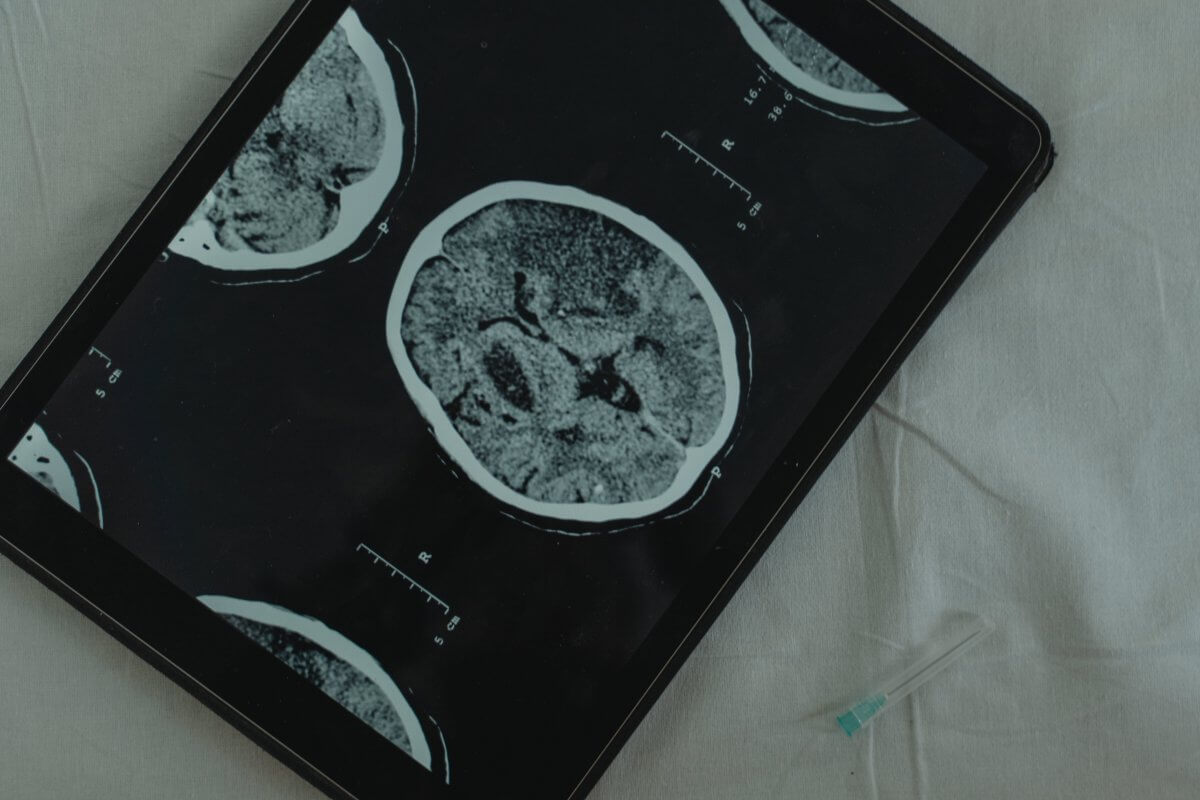Cannabis Care

Hope for brain tumors
The use of medical cannabis as an add-on therapy for brain tumors opens up fascinating perspectives in modern medicine. In this dynamic sphere of healthcare, the potential of cannabis-based therapies can be discovered as a supportive measure to improve the quality of life of patients with brain tumors.
Primary brain tumors or tumors of the spinal cord refer to all benign and malignant neoplasms that arise in the central nervous system. These include all growths originating from the brain or spinal cord substance itself or the surrounding meninges (1).
There are various approaches to the treatment of brain tumors. In addition to surgical interventions, radiotherapy or chemotherapy is also considered a successful method (2). These therapies are often associated with severe side effects and do not contribute to an improvement in the patient’s quality of life, at least during treatment. Common negative side effects include nausea, vomiting and diarrhea, resulting in weight loss, blood count changes, inflammation of the oral mucosa or hair loss (3).
Global awareness of the medicinal properties of the cannabis plant has increased significantly, especially in recent years. Coupled with the challenges posed by these side effects of conventional therapies, interest in medicinal cannabis among patients with brain tumors has significantly intensified due to its perceived safer profile (4).
Various studies suggest that medicinal cannabis can reduce some of these side effects caused by chemotherapy. For example, the plant shows promise in inhibiting nausea and vomiting, stimulating appetite, reducing pain, reducing inflammation and promoting cancer cell survival (5). Cannabinoid therapies could therefore not only be a useful addition to palliative therapies to improve symptom management and the quality of life of those affected during therapy, but could also make a positive contribution to the holistic care of patients.
References:
1 Neuroonkologische Arbeitsgemeinschaft (NOA). (2017). Primäre Tumoren von Gehirn und Rückenmark. Onko Internetportal. https://www.krebsgesellschaft.de/onko-internetportal/basis-informationen-krebs/krebsarten/hirntumor/definition-und-haeufigkeit.html
2 Universitätsmedizin Mannheim (UMM) (o.D.). Hirntumore am Neuroonkologischen Zentrum Mannheim behandeln. Medizinische Fakultät Mannheim der Universität Heidelberg. https://www.umm.de/neuroonkologisches-zentrum-mannheim/hirntumore-behandeln.
3 UKM Hirntumorzentrum (o.D.). Chemotherapie und tumorspezifische Medikamente. Universitätsklinikum Münster. https://web.ukm.de/hirntumorzentrum-chemotherapie.
4 Rodriguez-Almaraz, J. E., & Butowski, N. (2023). Therapeutic and Supportive Effects of Cannabinoids in Patients with Brain Tumors (CBD Oil and Cannabis). Current treatment options in oncology, 24(1), 30–44. https://doi.org/10.1007/s11864-022-01047-y
5 Abrams DI. Integrating cannabis into clinical cancer care. Current Oncology. 2016;23:8–14. doi: 10.3747/co.23.3099. in Rodriguez-Almaraz, J. E., & Butowski, N. (2023). Therapeutic and Supportive Effects of Cannabinoids in Patients with Brain Tumors (CBD Oil and Cannabis). Current treatment options in oncology, 24(1), 30–44. https://doi.org/10.1007/s11864-022-01047-y


